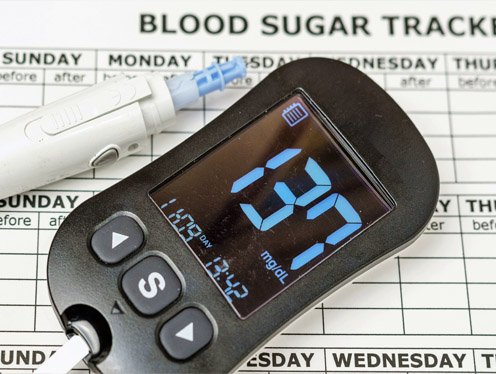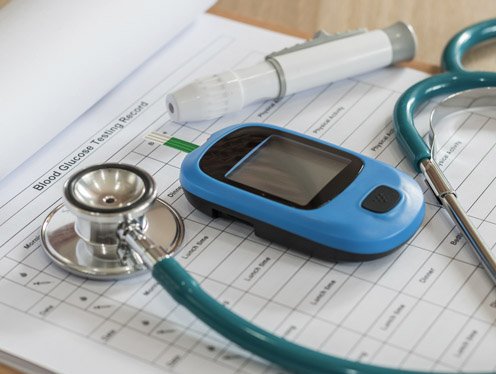Quality and Research: Cottage Internal Medicine Residency
Contact Us
For more information on the Internal Medicine Residency Program, please contact Kim Geller.
Email Kim Geller
All Internal Medicine residents are introduced to Quality Improvement through a 2-week Introduction to Quality (IQ) rotation during their 2nd year of residency. This is an opportunity to critically analyze one aspect of medical care and actively contribute to system improvement.
Residents interview relevant stakeholders, perform a literature review, and are introduced to the process of requesting, analyzing and interpreting data. All IQ projects are presented to peers, faculty, leadership and other stakeholders at the end of the rotation. The IM resident IQ projects have meaningful and real-time impacts on improving patient care, and in many projects, also serve as a mechanism to decrease health disparities across our system.
While conducting research is not a mandatory part of residency education, many residents choose to engage in original research projects with a faculty or subspecialist mentor and present at local, regional and national conferences. Residents interested in research are supported through the Director of Research and Quality (Dr. Katona), the Faculty, the Sage Medical Library, as well as Research Scientists, Epidemiologists and Statisticians at the Cottage Health Research Institute.

Resident Research
As an Internal Medicine resident at Cottage Health, you’ll have opportunities to conduct research to advance care in the specialty. The Cottage Health Research Institute (CHRI) team provides support for research projects through the expertise of a dedicated Graduate Medical Education Research Scientist.—Arianne Johnson, PhD.
Research & Quality Didactics
Research and quality noon conferences, workshops and training are an integral part of our education and culture. The following didactic opportunities represent a sample of what you can expect in the research and quality space:
- Introduction to Research
- Introduction to Quality Improvement
- Quality and Patient Safety at Cottage Health
- Introduction to Sage Medical Library
- How to Read a Journal Article
- Research Methods and Statistical Analysis
- How to Publish
- Research and Career Planning Workshop
- Interdisciplinary Journal Club
Introduction to Quality (IQ) Projects by Internal Medicine Residents, Since 2018
Intro to Quality Rotation
Cottage Hospital Internal Medicine Residency Projects, 2018-present
- Unnecessary Lab Tests and Choosing Wisely
- Clostridium Difficile: Dynamic Changes to an overwhelming Hospital problem
- Improving Appropriate Ordering and Renewal of Continuous Telemetry Monitoring in Hospitalized Non-ICU Patients
- The appropriate use of PPI prophylaxis in the prevention of stress ulcer formation in mechanically ventilated patients
- Reducing Time to Permanent Vascular Access in Hemodialysis Patients
- Minimizing Acute Encephalopathy in CKD/ESRD: Focus on Medication Safety
- Evaluation and Improvement of Transthoracic Echocardiogram Utilization
- Communication Between the ED and ICY regarding IVF in Sepsis/Septic Shock
- Rates of Osteoporosis treatment after diagnosis of osteoporotic fracture
- Addition of Palliative Care Practitioner to Resident Teaching Service During COVID-19
- Incidence of DVT associated with PICC line placement in med. & oncology patients
- Inpatient TB Rule-Out
- Reducing Time to Permanent Vascular Access in Hemodialysis Patients
- Penicillin Allergy & De-labeling with Skin Testing
- Evaluation of Pre-Surgical COVID screening test
- Digital Identity in Healthcare
- Obesity: Improving Counseling by PCPs for a Modifiable Risk Factor
- Hyperglycemia in COVID-19
- Transparency of Healthcare Costs
- Health Literacy in the Inpatient Setting
- Inpatient Testing for STD and the Opportunity to Diagnose HIV
- Improving Code Status and POLST Documentation
- Challenges with Blood Product Recording and Documentation
- Interpreter Services
- Outpatient Hypoglycemia
- Glycemic Outcomes and Nursing Opinion After Removal of Subcutaneous Insulin Double Check
- An Inpatient Pathway to the Management of Uncomplicated Skin and Soft Tissue Infections
- DVT prophylaxis
- Investigate the overuse of Computed Tomography Pulmonary angiography (CTPA) in clinically suspected PE patients
- Is Acute Hyperglycemia associated w/higher adverse outcomes during induction chemo for treatment of diffuse large b cell lymphoma?
- Sepsis Timer
- Adherence to GDMY for HFrEF and its Optimization
- Poor completion rates of clinical documentation inquiries by medical residents
- Diagnosis of Diabetes in the ED
- Inpatient Initiation of Suboxone for Management of Opiate Use Disorder
- High Sensitivity Troponins in the MICU
- Assessing PrEP Utilization in Santa Barbara County
- Delirium in Patients Following a Brief Course of Mechanical Ventilation
- Overnight ICU Admission Appropriateness
- Unplanned emergency room visits and hospital admissions in oncology patients receiving outpatient chemotherapy
- Delays in Discharge from ICU
- Quality Improvement: Advance Care Planning and POLSTs in the Hospital
IQ Project Sample: Undiagnosed Diabetes Mellitus in the Emergency Department, by Dr. Kimia Mashouf

Problem Statement
With 21% of adults living with Diabetes Mellitus (DM) in the US undiagnosed, does the Emergency Department present opportunity to increase DM diagnoses?

Stakeholders
Cottage Health Emergency Departments, the Santa Barbara Neighborhood Clinics, Diabetes Clinicians and Diabetes Educators.

Performance Measure
Percentage of patients in the ED with hyperglycemia without prior DM who were subsequently diagnosed with DM within 90 days?

Analysis/Cause of Variation
The Emergency Department is not a typical location for diagnosing chronic illness However, the ED is often a patient's only point of healthcare contact.

Results
Of 110 patients confirmed to have hyperglycemia in ER during the study period, 53% had a HbA1C performed within 90 days, and 66% of these received a new diagnosis of DM.

Improvement/Future Efforts
The ED is an important venue for recognizing hyperglycemia, diagnosing DM and initiation of connection to care, including community-based education and clinical resources?
Conferences
Internal Medicine Residents are encouraged to present their case reports, quality projects, and original research at a variety of local, regional, national and international conferences. Financial support is provided to help with the cost of conference attendance, including travel.
SAGE Medical Library
Located on the Santa Barbara Cottage Hospital campus, the SAGE Medical Library is the largest such facility on the Central Coast and the only one open to the public.
It serves the entire Santa Barbara community, including physicians, hospital staff, patients, students, medical researchers and the general public.